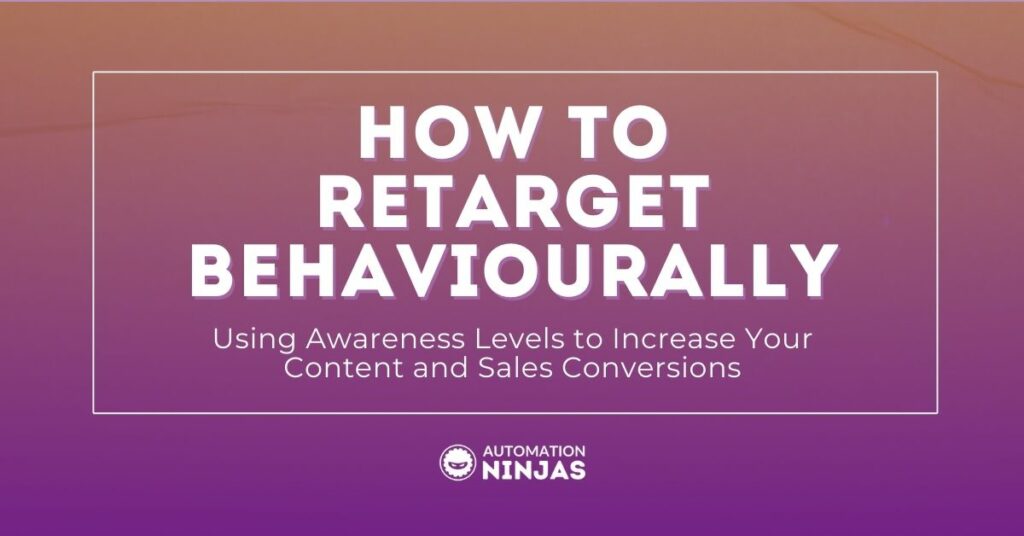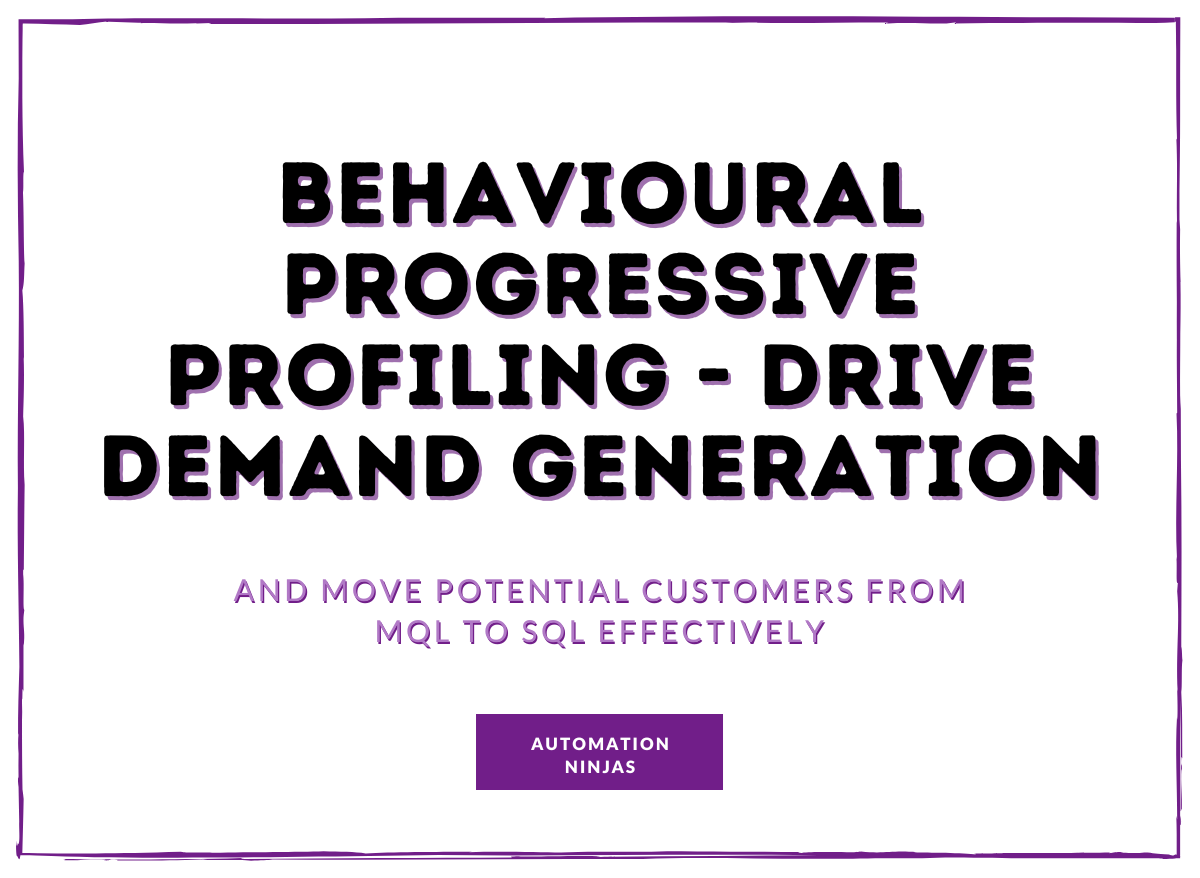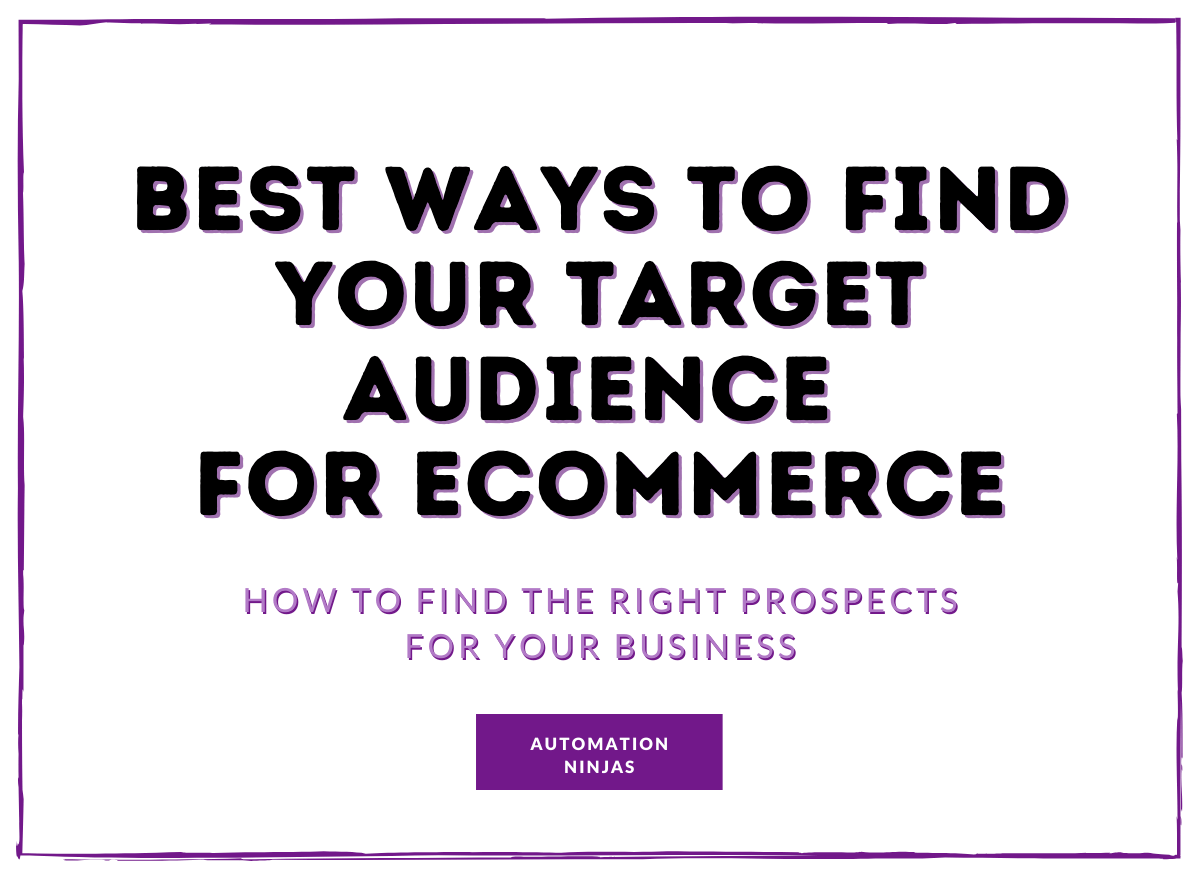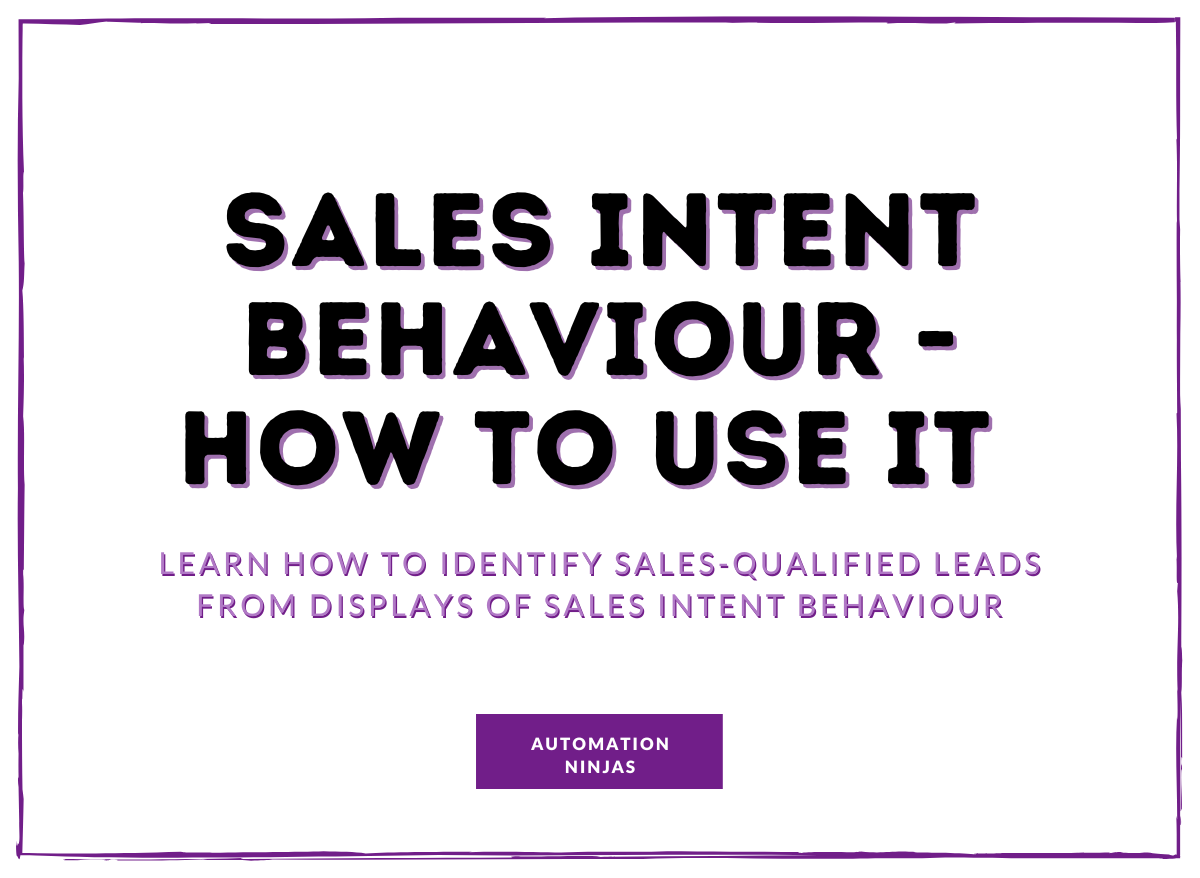AUTHOR: Kenda Macdonald
As a dedicated consultant, I specialise in elevating businesses through top-tier consultancy, fueled by a deep understanding of buyer psychology cultivated over years of experience. My expertise lies in crafting marketing and sales strategies that propel businesses to new heights by leveraging insights into the buyer brain. As a bestselling author, public speaker, and strategist, my passion for decoding human behavior drives me to innovate and deliver unparalleled results. I've designed a methodology adaptable for all types of businesses, ensuring transformative customer journeys and experiences.
Using awareness to retarget behaviourally and increase your content and sales conversions...
Retargeting done properly can massively increase your conversion rates - Google reckons you can sell 50% more than you currently do, with a good retargeting strategy.
50% more sales… That’s an extremely sexy statistic.
In fact the sexiness doesn’t stop there, here are 6 more retargeting statistics that are pretty damn awesome:
- Retargeting ads perform 10 times better than regular display ads
- They cost half of what search ads cost
- Retargeting can increase engagement by 400%
- Retargeting reduces cart abandonment by 6.5%
- Website visitors that are retargeted are 43% more likely to convert
Sounds absolutely fabulous right?
The premise behind retargeting is that when a visitor comes to your site/ page/ landing page, and they don’t complete the action you’d like them to… Then you follow them around the internet with tantalising snippets that push them over the edge.
In fact I even got retargeted when brushing up on my retargeting stats. I visited a blog article on Instapage, and was followed around the internet by this ad for nearly 2 weeks:
Retargeter has a great little flow on how retargeting works:
Isn’t it lovely and simple? They become a lifelong customer and everyone lives happily ever after! Perfect.
Not so fast buddy…
While retargeting is a powerful tool, it needs to be done with care and attention to work.
And with most things it can be enhanced and refined with a little bit of behavioural know how added in. Let’s take a look at how you can weave retargeting and behaviour together into a powerful strategy that allows you to benefit from some of those sexy stats.
Retargeting vs Remarketing
To really get to grips on how you can succeed with your retargeting, we need to make a little distinction between retargeting and remarketing.
Retargeting is usually referred to as the act of serving up ads based on website activity.
But something similar lurks in your marketing automation: remarketing. This is when someone interacts with your content or offers, and you send them an automated email to get them across the line.
That’s the technically correct definition of retargeting vs remarketing… But honestly, I refer to both as one and the same. Here’s why:
You should be doing both - together.
The strategy behind both retargeting and remarketing is the same: use consumer behaviour to help give them more of what they want, and increase your conversion rates.
All you’re doing is using their last interaction with you to nudge them a little.
When people interact with your products and services, their behaviour tells you what they are interested in. That information allows you to offer products and services, and little nudges that can get people across the line. That’s the power in both retargeting and remarketing.
And that is also the key to really successful remarketing and retargeting strategies… The way to get the most out of your retargeting strategy is to pay really close attention to WHAT they are engaging with.
Retargeting is generally used at the point of product purchase. But focusing on that end point means you miss all the opportunity to give them a catered and personalised journey that increases their chance of conversion.
The holy grail of marketing automation is to deliver the right message, to the right person, at the right time.
Combine the power of retargeting and remarketing and you have a powerful behavioural weapon to do precisely that.
How to get the most from your retargeting
What people engage with tells you exactly what they are interested in. It tells you what’s a problem right now, where they are in their buying process, and what they want to see more of.
If you listen to this behaviour, and adapt your retargeting strategies to serve the very best information up for what they need in the moment you will have the highest chance of getting those phenomenal conversion rates.
Take this one step further and use this information to get repeat sales from your remarketing efforts and you’re in marketing automation heaven.
Your mission with your behavioural retargeting is to offer up the right messaging, relative to where your consumer is in their journey right now.
They leave the clues behind as they engage, so you don’t have to guess at what the right message is. It is possible to identify exactly what enticing information you should be offering up next.
Awareness and behavioural retargeting
The type of behaviour your consumer displays can be broken up into the various stages of their buying journey.
Every consumer goes through each of the 5 stages of awareness before they purchase:
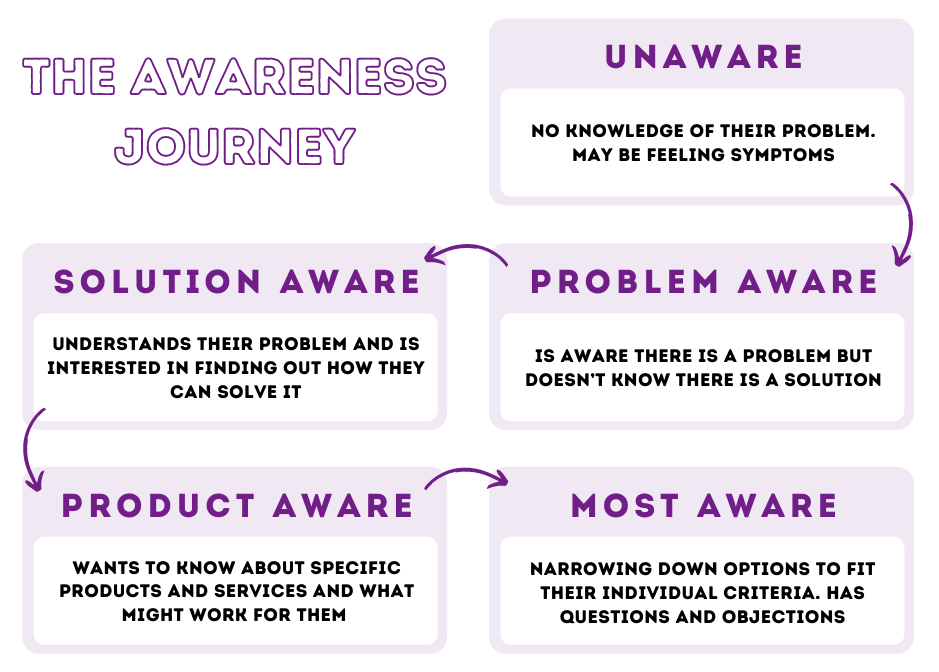
You can find out more on awareness here.
In order to get a sale, your consumer must have satisfied and moved through each of the awareness stages.
If you provide the wrong information, for the wrong stage - you’re going to miss your opportunity completely.
For example, if your consumer is problem aware and you try to close the sale, you’re not going to get the conversion. You’ve gone too hard too early, and it’s not what they are looking for right now.
If they are most aware and want to buy, and you keep offering them lead magnets, you’re not going to get the conversion. You’re offering information they simply aren’t interested in right now.
Matching up the right content, and the right offering to where they are in the awareness journey is vital to getting your conversion.
And what they are interacting with tells you where they are.
Here’s a handy little cheat sheet to what information you should be giving them at each stage:
Unaware:
They don’t know they have a problem at this point. There may be symptoms of an issue, but they are not actively seeking information to help them. Your ads would be pretty useless here.
Problem aware:
Something has happened. They have a problem and they want to know all about it. They are trying to define the width and breadth of their problem. They will be looking for “What is xxx” information, and the like. This is prime lead magnet territory. At the end of problem aware, they will know what their issue is, and will start to look for ways to solve it.
Solution aware:
They are clear on their problem, and they are looking for ways to solve their problem. It is here they become aware that there are solutions out there that could help them. They will want to explore the different solutions. A lot of “How to” content is consumed here. This is also prime lead magnet territory. At the end of solution aware, they will know what options are available to them, and they will start looking into specifics to narrow down what is right for them.
Product aware:
Here your consumers are looking into the specifics of any of the solutions they have discovered. They will discard those that aren't a good fit for them. Here they will be looking for specific brands, companies and services to help them. This is prime comparison territory. Your job is to help them determine what is a good fit for them - buyers guides and comparison tables are winners for this stage. Once they have achieved an understanding of what is for them, they will move into most aware.
Most aware:
When a consumer is most aware they know what their problem is, what options are out there to help them solve it, what products and services they can buy, and they are simply trying to narrow down who to purchase from and how that would work for them. Your job is to help them make their final choice and get them across the line. They need to see specifically how you would be a good fit over and above everyone else.
The earlier on in this journey you help your consumers, the stronger the relationship you can build with them. This helps you maintain loyal relationships long after the sale.
The problem aware stage is also where your largest concentration of prospects are. As they move down the awareness levels you get fewer prospects that become harder to convert as they build relationships with other brands or companies that have helped them through their journey. You want to be that brand or company, don’t leave it to your competitors to nurture the prospect and win the sale.
Your job is to help your consumers transition smoothly through each of the stages by educating and adding value.
Focus on what their mindset is as they enter their specific awareness stage. What information do they need? And what needs to be satisfied in order to transition to the next stage? Provide that and then offer more so you keep them engaged.
That is what you need to be retargeting in order to get the engagement with your ads and emails, and to increase your chances of conversion.
So to recap, retargeting is a powerful strategy you can utilise to increase your conversion rates. But it’s also a way you can learn more about your audience so you can give them the right information, at the right time to help them along their buying journey.

Sign up to the Brainbox to stay in the loop with the latest marketing news and exclusive content
Or, if you have something specific in mind, reach out to us directly. We're all ears and ready to chat! Contact us here.

